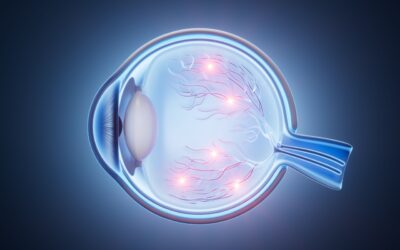New drug modalities, including oligonucleotides, bispecific antibodies, prodrugs, cell and gene therapies, and fusion proteins, offer new ways to treat human diseases once considered “untreatable.” Cell and gene therapies have been around for years, but advancing research allows scientists to use them in unprecedented ways to fight various forms of cancer and rare diseases. Scientists are using prodrugs and fusion proteins almost exclusively to assist in that fight, too.
The excitement around these new modalities is warranted, but they all come with challenges. For example, developers need to overcome biodistribution hurdles with prodrugs and cell and gene therapies. And each of the new modalities generates a different immune response in organisms, so that needs to be investigated and monitored case-by-case.
Challenges aside, these modalities are helping researchers combat life-threatening diseases in exciting new ways. Here is what drug developers need to know.
Prodrugs (i.e., the prodrug form of antibody-based biotherapeutics)
Antibody-based biotherapy is a new cancer-fighting modality engineered to target antigens on specific tumor cells. In cases where the same antigens show up on normal cells, autoimmunity can occur and “on-target, off-tumor” toxicity can be life-threatening. However, using the prodrug form of the biotherapeutic allows the molecule to remain inactive in the bloodstream until it reaches the tumor microenvironment (TME).
Five major formats of prodrugs are undergoing research and development, including:
- Naked monoclonal antibody (mAb)-based prodrugs
- Antibody-drug-complex (ADC), i.e., pro-antibody drug conjugates (PDC)
- T cell-engaging bispecific antibodies (TCB)-based prodrugs
- Chimeric antigen receptor T cell (CAR-T)-based prodrugs
- Cytokine-based prodrugs
Despite increased popularity in prodrugs, don’t overlook the modality’s bioanalytical challenges. The prodrug design complicates the biotherapeutic structure, increases metabolic variants and leaves small concentrations of the cleaved (activated) form of the drug in the bloodstream (which already contains large amounts of similar antibodies) after repeated dosing due to either activation by protease in circulation or escape from TME following site activation. Scientists should consider bioanalytic strategies to distinguish the target-bound from unbound forms of the drug.
Prodrugs, especially TCB-based ones, are prone to immune response and can produce large amounts of anti-drug antibodies. The activation of the prodrug may also generate new epitopes. Therefore, two distinct ADA assays—one for the intact prodrug and one for the cleaved form—are recommended to fully understand immunogenicity in this new modality.
Cell & gene therapies
Cell and gene therapies both prevent, treat, or cure diseases by correcting the underlying genetic defects, which is why scientists and regulatory bodies often categorize them together. Cell therapy transfers intact, live cells into an organism to help mitigate disease impacts; gene therapy replaces, inactivates, or introduces genes into cells either inside (in vivo) or outside (ex vivo) the body. There are slightly different bioanalytical considerations for cell and gene therapies:
- Cell therapy: Cell therapy products have been around for more than ten years, but chimeric antigen receptor T (CAR-T) cells show new potential to combat cancer—specifically leukemia cells. CAR-T cells bind to surface antigens on tumor cells and kill the tumor cells.
- Gene therapy: Gene therapies are used to introduce new or modified cells (from the original organism or a donor) to treat cancer, genetic and infectious diseases. Gene therapies are composed of vectors and transgenes. The vectors deliver the transgenes to the nuclei of target cells where the target protein is expressed for the intended therapeutic purpose. Developers need to consider biodistribution, shedding and immunogenicity throughout all phases to ensure safety and efficacy.
- Biodistribution studies: These assess the distribution and persistence of the vector and the transgene products. They can help guide preclinical toxicological studies and early clinical trials.
- Shedding studies: Shedding is the release of the virus-based gene therapeutics via secreta, excreta, or the patient’s skin. The U.S. FDA requires environmental risk studies to accompany regulatory submissions when using gene therapies. The bioanalytical assay usually detects either nucleic acids or infectious viruses. Nucleic acid-based assays, which are characterized by high sensitivity and rapid turnaround, cannot differentiate intact (infectious) versus degraded (non-infectious) viruses; therefore it is preferable to use them in combination with infectivity assays in a stepwise approach.
- Immunogenicity: Understanding immunogenicity in gene therapy requires investigating the vector, transgene and transgene protein because each of these components can trigger an immune response. Also, scientists should evaluate any pre-existing antibodies that can impact drug response, transgene delivery, and protein expression beforehand.
Therapeutic fusion proteins
Researchers engineer therapeutic fusion proteins (TFPs) by linking a protein to another molecule to form a multi-component molecule that maintains the biological function of the core domain. TFPs are more effective and safer than the parent protein drug, and their design allows for enhanced pharmacology and reduced immunogenic response.
Understanding TFP pharmacokinetic (PK) bioanalysis depends on the therapeutic’s size and structure and the critical reagents available, protein interference and required assay sensitivity. Both ligand-binding assays and LC-MS/MS are commonly used, each with its usual challenges. For LBA, the main challenge is the presence of an endogenous analyte, specific binding proteins, and nonspecific matrix components in the bloodstream that can cause substantial interference.
TFPs tend to show lower incidences of immunogenicity, so that shouldn’t be a primary concern. However, a confirmation assay is recommended to determine whether anti-drug antibodies target the entire molecule or only a clinically relevant domain.
Many new modalities lack conventional regulatory oversight, requiring unique bioanalytical strategies and platforms to ensure efficacy and safety. That said, it is difficult to ignore the potential benefits new modalities offer to conventional disease intervention. Collaborating with a laboratory testing partner can help mitigate challenges, address areas of concern and ensure your testing program succeeds.
Learn more about new modalities, like oligonucleotides and bispecific antibodies, in Part I of this blog series.
As a global company with operations across Asia, Europe, and North America, WuXi AppTec provides a broad portfolio of R&D and manufacturing services that enable the global pharmaceutical and life sciences industry to advance discoveries and deliver groundbreaking treatments to patients. Through its unique business models, WuXi AppTec’s integrated, end-to-end services include chemistry drug CRDMO (Contract Research, Development and Manufacturing Organization), biology discovery, preclinical testing and clinical research services, helping customers improve the productivity of advancing healthcare products through cost-effective and efficient solutions. WuXi AppTec received an AA ESG rating from MSCI for the fourth consecutive year in 2024 and its open-access platform is enabling around 6,000 customers from over 30 countries to improve the health of those in need – and to realize the vision that “every drug can be made and every disease can be treated.”


